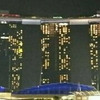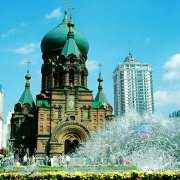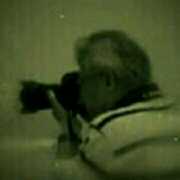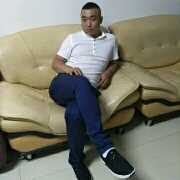The memorial park at the end of World War II is located in the north of Hutou tourist town, located on the top of the Lenghu Mountain in the main position of Hutou Fortress. The location of the Memorial Park was once the seat of the Tiger Head Fortress Command of the Japanese Army invading China, and it was also the place where the Soviet Red Army attacked the Tiger Head Fortress, the most violent battle, the longest attack, the sacrifice of personnel and the elimination of the Japanese army. In order to commemorate the 50 million people who died in the world's anti-fascist struggle, Hulin City has invested 5.6 million yuan since 2009, to build the memorial park at the end of the Second World War. The memorial park covers an area of 29.3 hectares, consisting of a ladder-shaped historical event display platform with a width of 17 meters and an extension of 260 meters, a sculpture of important historical events in World War II, a memorial plaza at the end of World War II, a labor memorial plaza, a martyr memorial plaza, a cannon model, a cannon position, The World War II Memorial Park, based on the brewing and outbreak of the Great War, the full development of the Great War and the final battle and finale of the Great War, began with the Nazi Germany raid on Poland on September 1, 1939, and ended with the last shot of the war on August 26, 1945. It highlights several of the most influential battles of World War II. With the theme of commemoration, the history of World War II was briefly reviewed with landscape walls and sculptures, showing the cruelty of war and the harm it has caused to people, so that people cherish today's happy life and cherish world peace.
;
Memorial Park at The End of World War ll Review
4.7 /525 Reviews






5/5
Memorial Park at The End of World War ll
Posted: Oct 21, 2017
Like
Popular Destinations
Rogers County Travel | Lahore Travel | United States Travel | Australia Travel | San Francisco Travel | Guangdong Travel | Guangzhou Travel | Denver Travel | Vancouver Travel | Doylestown Travel | Ohrid Travel | Gosford Travel | Chongqing Travel | Wulingyuan District Travel | Rotorua Travel | Zhangye Travel | Prizren Travel | Raub Travel | Orange Travel | Ashland Travel | Carterton District Travel | Sihui Travel | Puerto Natales Travel | Kent County Travel | Worthen with Shelve Travel | East Hampshire District Travel | Risaralda Travel | Ripon Travel | Alpine Travel
Recommended Attractions at Popular Destinations
Bangkok attraction near me | Tokyo attraction near me | Manila attraction near me | Hong Kong attraction near me | Taipei attraction near me | Seoul attraction near me | Los Angeles attraction near me | New York attraction near me | Shanghai attraction near me | Kuala Lumpur attraction near me | Shenzhen attraction near me | Osaka attraction near me | Singapore attraction near me | London attraction near me | Guangzhou attraction near me | San Francisco attraction near me | Beijing attraction near me | Macau attraction near me | Bali attraction near me | Paris attraction near me | Ho Chi Minh City attraction near me | Orlando attraction near me | Jakarta attraction near me | Chicago attraction near me | Phuket attraction near me | Toronto attraction near me | Istanbul attraction near me | Dallas attraction near me | Cebu attraction near me | Seattle attraction near me
Popular Attractions
Tiger Moth Flights | Jet Boat Extreme | Alfred Nicholas Memorial Garden | Phillip Island | Mrs Macquarie's Chair | Basilica Minore del Santo Nino | Tiger Kingdom - Phuket | Tsutenkaku | Underwater World Langkawi | Featherdale Sydney Wildlife Park | Waterbom Bali | Sala del Regno dei Testimoni di Geova di Volla | Masjid Jamek Sultan Abdul Samad | Panyu Square | Bellagio Fountain | Gregory Gorge | Green Lake Park | Kollapuradamma Temple Javanammanadoddi ಕೊಲ್ಲಾಪುರದಮ್ಮ ದೇವಸ್ಥಾನ | Al-Barokah Mosque | Heath Hayes Park | Heydər Əliyev Parkı | Kulturhaus | Bunga valley | Watervliet Veterans Memorial Park | Northern Community Park | Sky Ranch Golf Course | Homewood Park | Hong Kong Disneyland | Hanging Temple | Currumbin Wildlife Sanctuary
Popular Travelogues
Bangkok Travelogue | Tokyo Travelogue | Hong Kong Travelogue | Seoul Travelogue | Los Angeles Travelogue | New York Travelogue | Shanghai Travelogue | Kuala Lumpur Travelogue | Shenzhen Travelogue | Osaka Travelogue | Singapore Travelogue | London Travelogue | Beijing Travelogue | Macau Travelogue | Bali Travelogue | Paris Travelogue | Phuket Travelogue | Toronto Travelogue
Payment Methods
Our Partners
Copyright © 2024 Trip.com Travel Singapore Pte. Ltd. All rights reserved
Site Operator: Trip.com Travel Singapore Pte. Ltd.
Site Operator: Trip.com Travel Singapore Pte. Ltd.




